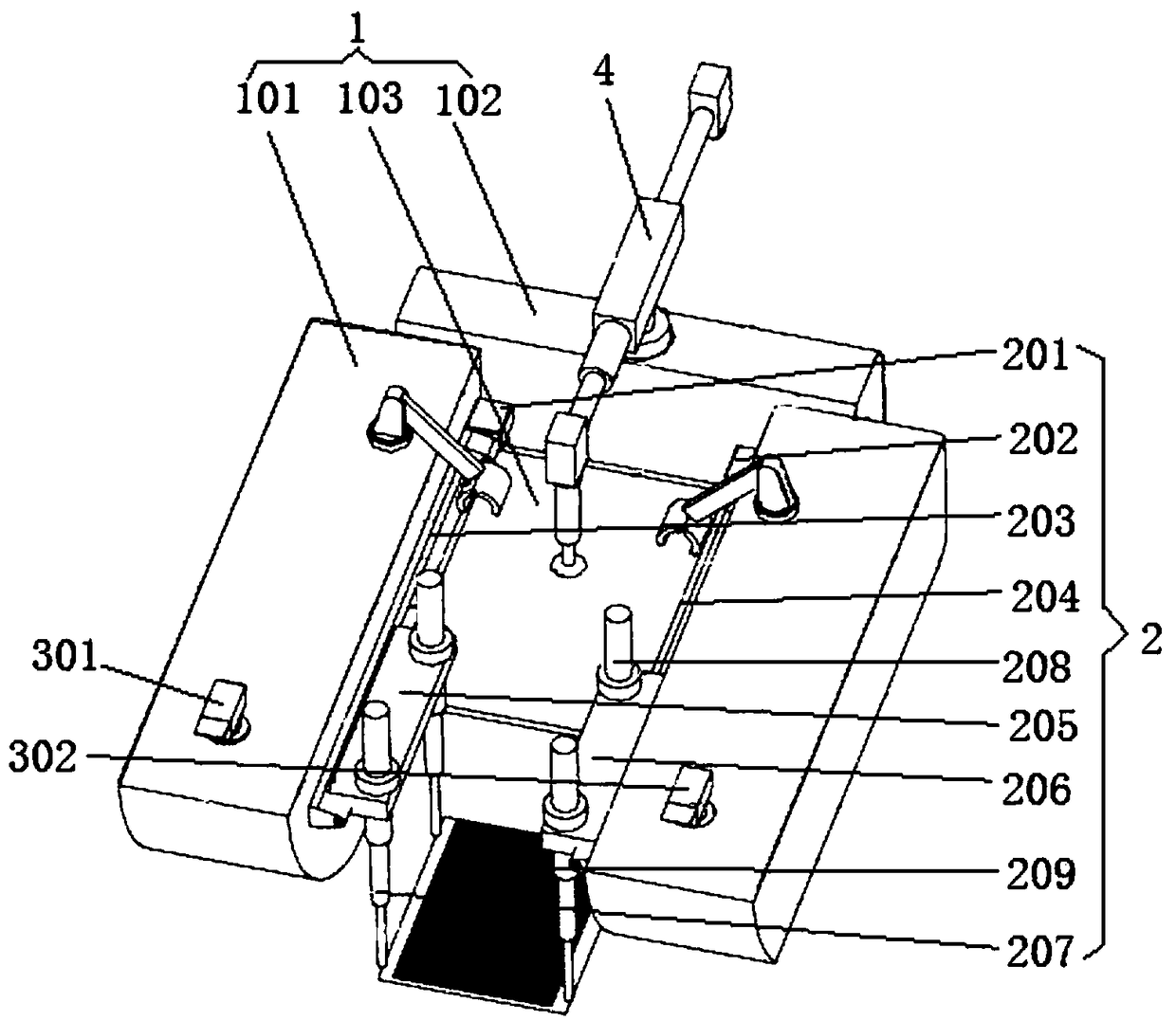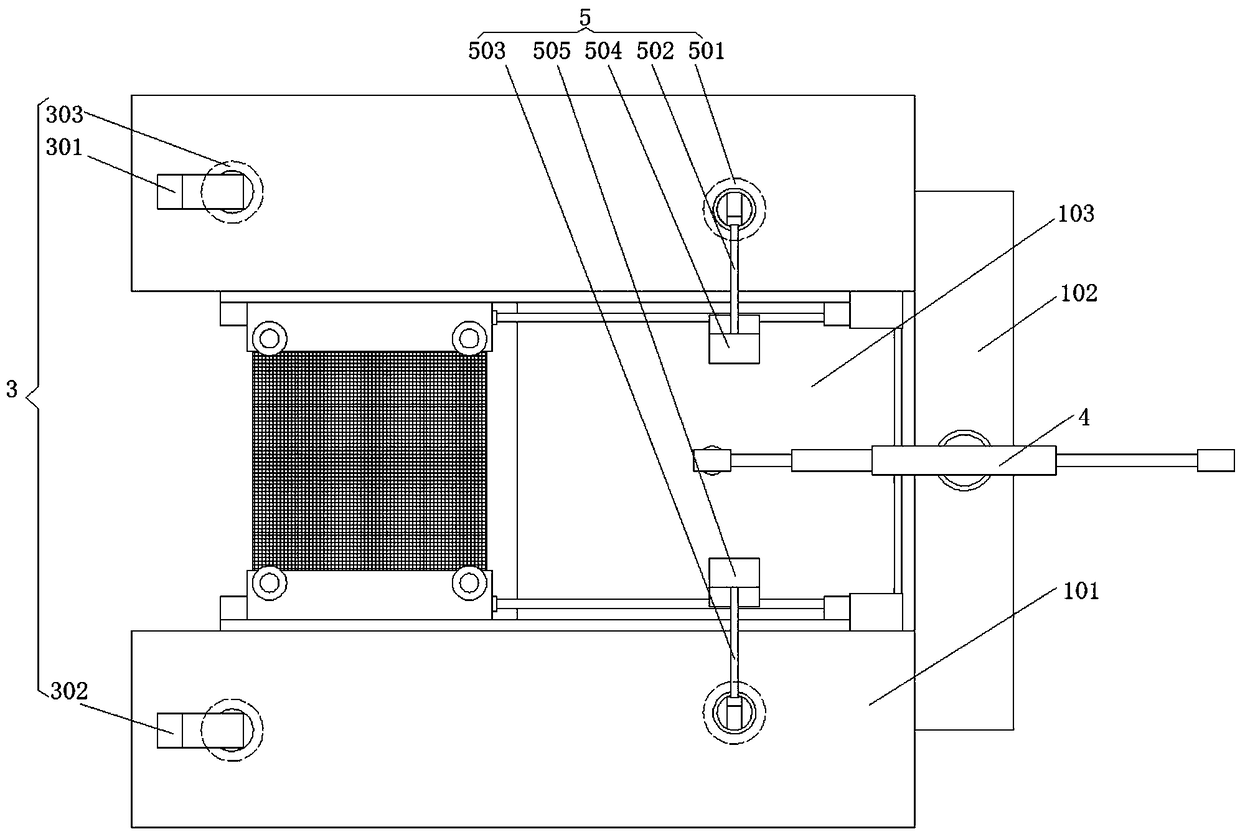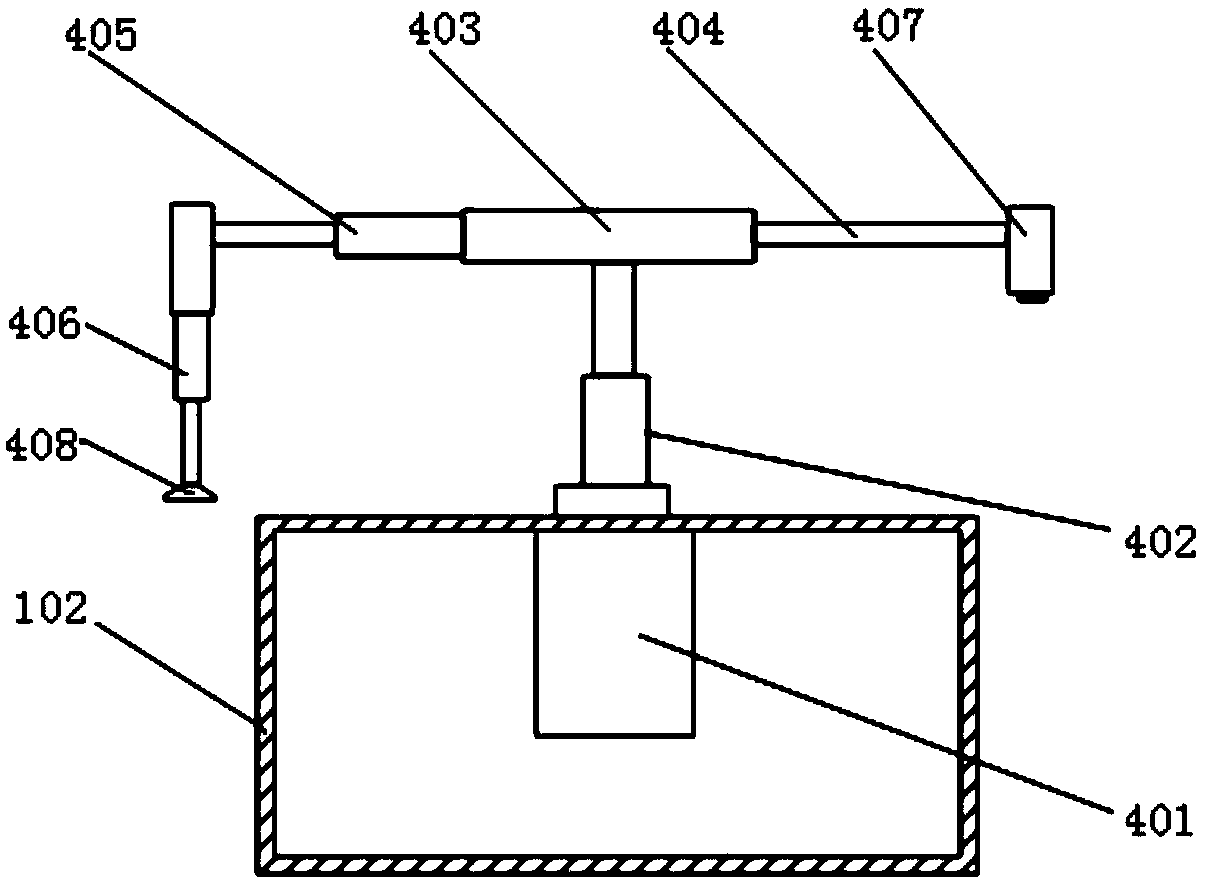Intelligent unmanned water rescue device based on binocular vision and a use method thereof
A binocular vision and vision technology, applied in water lifesaving, transportation and packaging, ships, etc., can solve the problems of reduced visibility, limited visual area, and a large number of special rescue equipment, so as to improve recognition accuracy and rescue speed, and improve rescue Effects on success and survival
- Summary
- Abstract
- Description
- Claims
- Application Information
AI Technical Summary
Problems solved by technology
Method used
Image
Examples
Embodiment Construction
[0021] The present invention will be further described in detail below in conjunction with the accompanying drawings and embodiments.
[0022] Such as Figure 1-Figure 4 As shown, an intelligent unmanned water rescue device based on binocular vision includes a lifesaving hull 1, a lifting and translation steel mesh device 2, a binocular vision detection device 3, an image acquisition and pressing device 4, a dual-arm manipulator device 5 and Alarm device 6, lifting and translation steel mesh device 2 is provided inside the two chambers 101 of the rescue hull 1, a double-arm manipulator device 5 is provided at the top of the tail of the rescue hull 1 chamber 101, and the head of the rescue hull 1 chamber 101 is A binocular vision detection device 3 is arranged on the top of the part, an image acquisition and pressing device 4 is arranged in the middle of the top of the rescue hull 1 stern platform 102, and an alarm device 6 is arranged on the sidewall of the tail of the rescue ...
PUM
 Login to View More
Login to View More Abstract
Description
Claims
Application Information
 Login to View More
Login to View More - R&D
- Intellectual Property
- Life Sciences
- Materials
- Tech Scout
- Unparalleled Data Quality
- Higher Quality Content
- 60% Fewer Hallucinations
Browse by: Latest US Patents, China's latest patents, Technical Efficacy Thesaurus, Application Domain, Technology Topic, Popular Technical Reports.
© 2025 PatSnap. All rights reserved.Legal|Privacy policy|Modern Slavery Act Transparency Statement|Sitemap|About US| Contact US: help@patsnap.com



